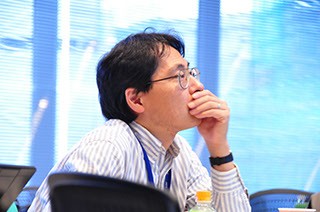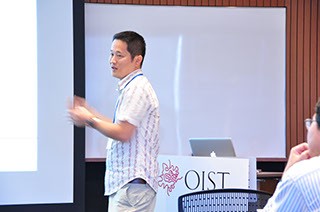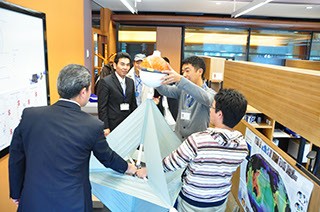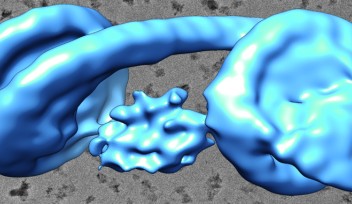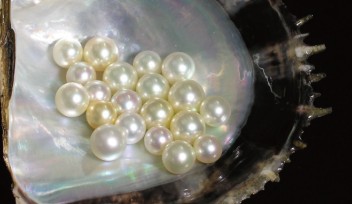Currents, Corals and Collaboration
What do global warming, marine rescue operations, and coral habitat have in common? Researchers who gathered at OIST on January 31, 2012 to attend the second liaison meeting of the Marine Research in Okinawa had the answer. The meeting, which began with a welcome address by OIST President Jonathan Dorfan, comprised of members of the OIST Marine Biophysics Unit and their local partners. The liaison meeting has become a venue for information exchange on marine research carried out by the members, as well as a venue for finding opportunities of collaboration.
In a talk “Marine Health Check,” Mr. Yukihiro Asami of the Japan Meteorological Agency introduced the agency’s daily, short-term and long-term operations, explaining that data collected from its monitoring of Japanese waters is used not only for weather forecast but also for addressing global warming. Mr. Isao Tedokon from the Japan Coast Guard’s 11th Region Headquarters talked about tidal current observation he carried out last year off the coast of Kuroshima in southern Okinawa. Saying that the study came after a series of maritime accidents with some resulting in deaths, Mr. Tedokon said the cause of the accidents was wind-driven currents that flowed parallel to the shore, carrying away inexperienced snorkel divers.
Dr. Taichi Sakagami and Dr. Daisuke Hasegawa of the OIST Marine Biophysics Unit also each gave a presentation. While Dr. Sakagami talked about an Okinawa version of the Regional Ocean Model System initially developed at the University of California-Los Angeles, Dr. Hasegawa spoke about a modeled ocean surface flow between Iheya and Izena Islands located north of mainland Okinawa. The Unit employs computer simulation to investigate the dispersal of coral and other marine animal larvae that move from one place to another with the help of ocean currents. Dr. Sakagami noted that data collected by the Meteorological Agency, the Coast Guard and other marine research organizations are indispensable for the Unit’s research, explaining that only by comparison, can he verify their prediction of ocean surface and bottom-sea temperatures, as well as estimation of ocean circulation patterns.
Dr. Satoshi Mitarai, Associate Professor of the OIST Marine Biophysics said, “Okinawa has a number of organizations with specific expertise. This makes the establishment of a high-quality marine observation system possible. I believe that participants in this liaison meeting can each play a key role in realizing this goal.”
Other participating organizations of the meeting were the University of the Ryukyus, the Okinawa Prefectural Fisheries and Ocean Research Center in Itoman City, the Okinawa Subtropical Environment Remote-Sensing Center in Onna Village, and the Japan Fisheries Research Agency headquartered in Kanagawa Prefecture.
Specialty
Research Unit
For press enquiries:
Press Inquiry Form








